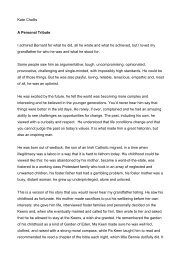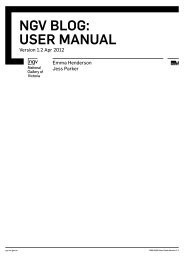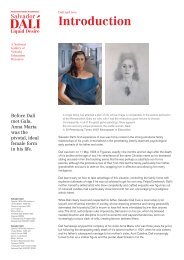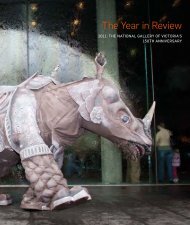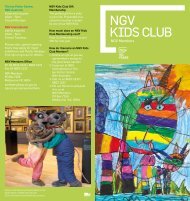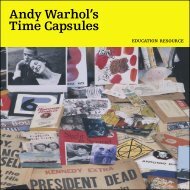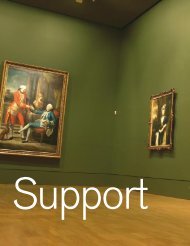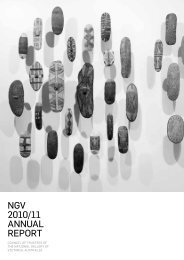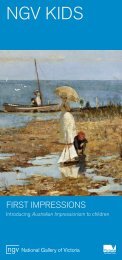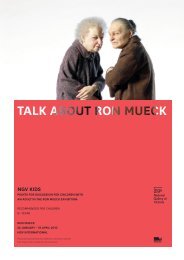Giambattista tiepolo The banquet of Cleopatra 1743–44 - National ...
Giambattista tiepolo The banquet of Cleopatra 1743–44 - National ...
Giambattista tiepolo The banquet of Cleopatra 1743–44 - National ...
Create successful ePaper yourself
Turn your PDF publications into a flip-book with our unique Google optimized e-Paper software.
Gallery visit activities, continued<br />
• Tiepolo’s paintings show the influence <strong>of</strong> the seventeenth-century Baroque<br />
style, characterised by much ornamentation, dramatic light and shade<br />
and exaggerated emotional expression. Discuss where you can see<br />
evidence <strong>of</strong> these characteristics in <strong>The</strong> <strong>banquet</strong> <strong>of</strong> <strong>Cleopatra</strong>.<br />
Post-visit activities<br />
In 1762 Tiepolo moved to Spain where his commissioned work<br />
included frescos on the ceilings <strong>of</strong> the Royal Palace in Madrid.<br />
• Research the life <strong>of</strong> the ruling monarch at the time, Charles III.<br />
• What pr<strong>of</strong>ound reforms did he carry out? How did he transform Madrid?<br />
• Can you imagine any famous people today behaving in a similar way to <strong>Cleopatra</strong> and<br />
Antony in this painting? If so, who might they be and what would your reaction be?<br />
Create an artwork or short play that depicts a modern day version <strong>of</strong> the story.<br />
Research the life <strong>of</strong> Tiepolo. Find<br />
out about his great rival in Spain,<br />
Anton Raphael Mengs. Why<br />
was Tiepolo’s work unpopular<br />
in Spain at the end <strong>of</strong> his life?<br />
<strong>The</strong> following activity encourages<br />
students to think about a story or<br />
topic from diverse perspectives:<br />
As a class, brainstorm various<br />
viewpoints about the story in the<br />
painting. Consider who is involved,<br />
who might be affected by it and<br />
how it might be viewed by people<br />
<strong>of</strong> diverse ages, pr<strong>of</strong>essions, cultures<br />
and different times in history.<br />
Students take on the role <strong>of</strong><br />
the character with one <strong>of</strong> these<br />
viewpoints and describe the<br />
story from his or her perspective.<br />
Characters could include<br />
a contemporary politician,<br />
psychologist, feminist, playwright,<br />
vet, dietician, gossip columnist,<br />
detective, a poor Egyptian citizen,<br />
or <strong>Cleopatra</strong> or Antony themselves.



